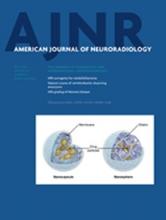Abstract
BACKGROUND AND PURPOSE: The administration of gadolinium contrast agent is a common part of MR imaging examinations in patients with MS. The presence of gadolinium may affect the outcome of automated tissue classification. The purpose of this study was to investigate the effects of the presence of gadolinium on the automatic segmentation in patients with MS by using the synthetic tissue-mapping method.
MATERIALS AND METHODS: A cohort of 20 patients with clinically definite multiple sclerosis were recruited, and the T1 and T2 relaxation times and proton density were simultaneously quantified before and after the administration of gadolinium. Synthetic tissue-mapping was used to measure white matter, gray matter, CSF, brain parenchymal, and intracranial volumes. For comparison, 20 matched controls were measured twice, without gadolinium.
RESULTS: No differences were observed for the control group between the 2 measurements. For the MS group, significant changes were observed pre- and post-gadolinium in intracranial volume (−13 mL, P < .005) and cerebrospinal fluid volume (−16 mL, P < .005) and the remaining, unclassified non-WM/GM/CSF tissue volume within the intracranial volume (+8 mL, P < .05). The changes in the patient group were much smaller than the differences, compared with the controls, which were −129 mL for WM volume, −22 mL for GM volume, +91 mL for CSF volume, 24 mL for the remaining, unclassified non-WM/GM/CSF tissue volume within the intracranial volume, and −126 mL for brain parenchymal volume. No significant differences were observed for linear regression values against age and Expanded Disability Status Scale.
CONCLUSIONS: The administration of gadolinium contrast agent had a significant effect on automatic brain-tissue classification in patients with MS by using synthetic tissue-mapping. The observed differences, however, were much smaller than the group differences between MS and controls.
ABBREVIATIONS:
- BPV
- brain parenchymal volume
- CSFV
- cerebrospinal fluid volume
- EDSS
- Expanded Disability Status Scale
- Gd
- gadolinium
- GMV
- gray matter volume
- ICV
- intracranial volume
- NV
- the remaining, unclassified non-WM/GM/CSF tissue volume within the ICV, defined as ICV − (WMV + GMV + CSFV)
- PD
- proton density
- WMV
- white matter volume
- © 2014 by American Journal of Neuroradiology
Indicates open access to non-subscribers at www.ajnr.org












